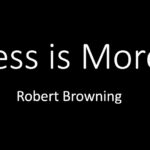
Are the Terms Drafting, Composing, Writing Synonymous?
Yes, the terms drafting, composing, and writing are often used interchangeably to refer to the process of putting ideas into words. However, in writing studies, as outlined below, each term holds distinct meanings.
Related Concepts
What is Drafting?
In writing studies, the term drafting is typically used to refer to the preliminary stages of the writing process, where writers begin translating their ideas into text. At this stage, writers may engage in “the believing game,” a mindset that allows them to explore and develop ideas freely, focusing on content generation without immediate concern for correctness. Through practices like freewriting and the use of heuristics, they suspend judgment, allowing ideas to flow.
What is Composing?
In writing studies, composing is a broader term than drafting. Whereas drafting typically refers to the earlier preliminary stages of writing — and the focus on creativity over conforming to Standard Written English, composing refers to the entire process of creating text, including prewriting, inventing, drafting, collaborating, researching, planning, organizing, designing, rereading, revising, editing, proofreading, sharing or publishing.
Along with the term drafting, composing is viewed by compositionists to be a creative process that allows us to discover what we want to say. Donald Murray (1972), an influential figure in composition studies, describes composing as “the process of discovery through language. It is the process of exploration of what we know and what we feel about what we know through language. It is the process of using language to learn about our world, to evaluate what we learn about our world, to communicate what we learn about our world.”
The term composing may also refer to a broader theory about how people communicate and engage in meaning-making practices. Researchers and theorists in writing studies have developed multiple theories of composing, including
- The Process Model: This theory of composing focuses on the recursive steps, or intellectual strategies, that writers engage in when composing, especially prewriting, inventing, drafting, collaborating, researching, planning, organizing, designing, rereading, revising, editing, proofreading, sharing or publishing.
- The Problem-Solving Model: Introduced by Hayes and Flower (1980–1981), this model conceptualizes composing as a problem-solving activity: writers are seen as addressing various rhetorical and cognitive problems, such as organizing ideas, tailoring messages to their audience, or clarifying arguments. Thief chief focus to solve problems, and this involves planning, translating, and reviewing. Constraints that influence problem solving include the writer’s memory, task environment, motivation, knowledge of design schemas, and access to production technologies.
- The Embodied Knowledge Model: This theory of composing presumes that writers listen to their intuition, or “felt sense,” to guide decisions when writing. In this model, composing is seen as an intuitive, organic practice where writers draw on embodied knowledge to bridge the gap between their intended message and the written text. During composing, writers pause to reread and adjust their work, continuously aligning their words with an internal sense of meaning, making composing a process of responsive listening and intuitive adjustment.
- The Psychological Model: This theory of composing focuses on the importance of managing emotions and mindset during writing. Writers often grapple with challenges like self-doubt, anxiety, and motivation, making this model distinct for its focus on the mental and emotional aspects of composing. Scholars such as Boice (1994) have explored how fear, perfectionism, and procrastination can hinder productivity, while offering strategies like setting small goals and using timed writing sessions to combat these barriers. In the “Framework for Success in Postsecondary Writing” (2011), the Council of Writing Program Administrators, the National Council of Teachers of English, and the National Writing Project identify seven key habits of mind that shape how writers approach composing, sustain their engagement, and adapt to the demands of a project.
- Curiosity – fostering a desire to explore and question.
- Openness – the willingness to consider new perspectives.
- Engagement – showing commitment to learning and writing.
- Creativity – using imagination to explore new ideas and solutions.
- Persistence – the ability to stick with difficult writing tasks.
- Responsibility – taking ownership of one’s work.
- Flexibility – adapting to changing circumstances and feedback.
What is Writing?
Writing is not just a means of communication; it is a technology—a tool that humans have developed to extend our cognitive and communication abilities. By converting thoughts into written symbols, writing allows us to record, preserve, and disseminate knowledge across time and space. This technological innovation enables complex ideas to be shared and built upon, fostering the development of civilizations and cultures. From ancient cuneiform tablets to modern digital texts, writing technologies have continuously evolved, reshaping how we think, learn, and interact with the world. The study of semiotics—which explores how humans use and interpret signs and symbols—underscores the profound impact of writing systems on human cognition and society.
This cognitive tool has transformed human capabilities far beyond simple message transmission. When we write, we create an external scaffold for thought, allowing us to hold and manipulate complex ideas that would be impossible to maintain through oral tradition alone. As E.M. Forster famously asked, “How can I tell what I think till I see what I say?”—capturing how the act of writing itself is intrinsically linked to the process of thinking, discovery, and self-expression.In writing studies, writing refers to more than the process of putting words on a page (drafting or transcribing) or organizing them into a coherent message (composing).
Writing involves
- Generating and Organizing Ideas: In writing studies, writing is often regarded as a mode of thinking—a process that not only records thoughts but also actively shapes and clarifies them. This perspective aligns with the notion that writing facilitates deeper cognitive engagement, enabling individuals to explore and refine their ideas. As Janet Emig (1977) noted in her seminal work, “Writing as a Mode of Learning,” the act of writing involves unique cognitive functions that contribute to learning and understanding.
- Encoding Language into Text: Writers transform abstract ideas into written symbols—letters and words—using the conventions of a language to create a tangible record. Thought finds shape and form in language.
- Engaging with a Semiotic System: At its core, writing functions as a semiotic process—a network of symbols that expresses complex ideas through culturally established systems. This process involves signifiers (e.g., words, icons, or symbols) that represent larger signified concepts. As Ferdinand de Saussure highlighted, the link between signifier and signified is arbitrary; meanings are culturally and socially constructed, not inherent.Additionally, writing uses varied types of signs, as Charles Sanders Peirce theorized:
- Icons: Visual elements that resemble or mirror their subjects (e.g., graphs or images within text).
- Indexes: Symbols or words that point to or suggest something, offering context or association (e.g., smoke as an indicator of fire).
- Symbols: Abstract representations, such as letters or words, whose meanings depend on shared understanding and conventions.
- Participating in Rhetorical Analysis of Social and Cultural Contexts: Writers consider their audience, purpose, and the norms of the discourse community, making writing a socially situated activity.
- Facilitating Thinking and Learning: The act of writing helps individuals clarify thoughts, reflect on ideas, and engage in critical analysis.
References




























